How Much Does a Cinder Block Weigh Per Size?
Author: Chris Miller | Editor: Omar Alonso
Review & Research: Jen Worst & Chris Miller
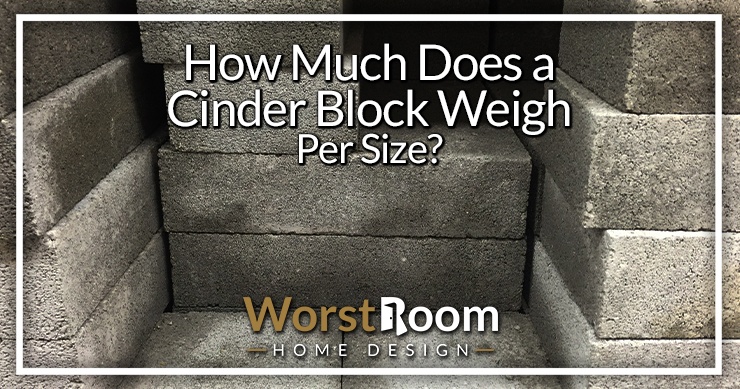
Cinder blocks are often a popular choice for various backyard home improvement projects. But, have you ever wondered: how much does a cinder block weigh? Weight is an important factor for determining accessibility or ease of use, especially in DIY projects. Cinder blocks strongly resemble their concrete counterparts.
Nonetheless, they do differ in weight, material, and size. In this blog post, we'll explore the different weights and sizes cinder blocks can come in. You might be surprised to discover just how much these seemingly everyday building components can vary in weight, based on construction and density.
What Is a Cinder Block & How Much Does it Weigh?
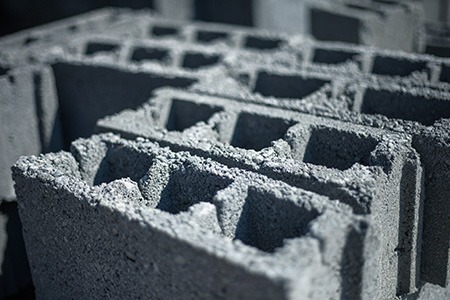
Cinder blocks are hollow rectangular building materials, usually made from small coal cinders mixed with sand and cement. Their standard size ranges from 4 to 16 inches, while cinder block weight ranges from 15 to 72 pounds.
The following is a more comprehensive breakdown of the corresponding sizes and weights:
- 4 inches: 15 lbs to 26 lbs
- 6 inches: 28 lbs to 32 lbs
- 8 inches: 35 lbs to 40 lbs
- 10 inches: 43 lbs to 55 lbs
- 12 inches: 58 lbs to 62 lbs
- 16 inches: 65 lbs to 72 lbs
What Is a Cinder Block?
A cinder block is a masonry unit often used within the construction industry. They're used in retaining walls, cinder block houses, and many other purposes requiring a stable, strong structure.
Thanks to its lightweight nature (hollow cores) and cost-efficiency, cinder blocks make for a great DIY tool. Cinder blocks are no longer in commercial mass-production. This has been the case for the last 50 years; due solely to the proliferation of concrete blocks.
Also known as concrete masonry units (CMUs) or breeze blocks, these versatile types of concrete blocks are primarily composed of cement, sand, and small loose particles called cinders. Cinders are obtained from coal combustion and other industry by-products.
The porous nature and lighter weight make cinder blocks ideal for various applications such as garden beds, retaining walls, and landscaping projects.
However, due to their lower tensile strength and susceptibility to buckling under heavy loads, they are not recommended for load-bearing structures requiring high structural integrity. In these cases, proper reinforcement measures need to be in place.
Standard Weight of Cinder Blocks
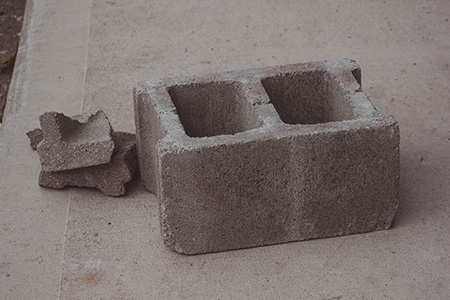
So now, how much does a cinder block weigh? The standard weight of cinder blocks varies depending on their size, which ranges in width from 4 to 16 inches. For example, a 4-inch cinder block weighs around 25 pounds, whereas an 8-inch block weighs approximately 38 pounds.
The most commonly used cinder block size in construction is the 8 in. x 8 in. x 16 in. cinder block, with a total weight of 38 pounds.
Important to remember that cinder blocks are inherently designed to be lightweight. They’re commonly referred to as low-density blocks.
Two identical-looking cinder blocks could easily have different weights. If one were to contain a denser aggregate than another or a higher moisture content – that amounts to several extra pounds per cinder block.
These are crucial details when considering load-bearing capacities for structures built with this budget-friendly masonry product.
Variations in Weight Based on Composition
The weight of a cinder block can vary greatly depending on the composition or components.
For example, the type of aggregate used in manufacturing not only impacts the overall strength of the block, but also contributes to differences in weight capacity.
There are also several different types of cinder blocks.
A hollow cinder block at 4 inches might weigh 24 pounds, compared to a solid cinder block at 4 inches, which weighs approximately 33 pounds.
It's important for our readers to note that when contractors or masons refer to a 4-inch or 6-inch block, they are specifically referencing the block’s width, and not its other dimensions.
Generally, the standard height (8 inches) and length (16 inches) of most commercial cinder blocks remains the same. The one variable in the dimensions of a cinder block is its width.
Of course, there are non-standard size blocks that were previously available (manufactured) for all kinds of different structural purposes. These include cap blocks and lintels, used to span longer spaces.
Factors Affecting the Weight of Cinder Blocks
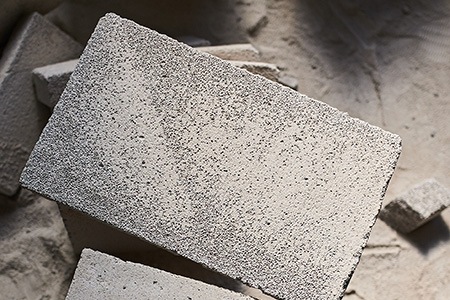
Factors that can affect the weight of cinder blocks include the presence of hollow cores, the type of aggregate used in production, moisture content, and the age of the cinder block.
Presence of Hollow Cores
One unique feature of cinder blocks is their hollow cores, which are sometimes filled with concrete or rebar for added strength and stability. How much does a cinder block weigh? Much less when the majority of the internal material is absent.
These cores not only make cinder blocks lighter, but also allow for easier handling during transportation and installation. However, it's important to note that the weight of a cinder block can vary based on the size and number of hollow cores present.
Larger blocks with more cells weigh less than smaller ones with fewer cells – most cinder blocks typically have two.
Type Of Aggregate Used
The type of aggregate used in cinder blocks can have a significant impact on the total weight and strength of the cinder block. The most common types of aggregates used in cinder blocks are fly ash, slag cement, and lightweight aggregates such as vermiculite or perlite.
Fly ash and slag cement are industrial by-products. They are often added in production to reduce the weight and increase the durability of the block.
Remember that opting to use cinder blocks can impact structural integrity, especially when compared to concrete blocks. If you come across some cinder blocks, they can be a great tool for DIY projects. They just fail to offer a ton of structural support.
Moisture Content
Moisture content is another factor that can impact the total weight of these building materials. Cinder blocks, like many masonry products, are porous and can absorb water.
If they become soaked with water, these cinder blocks could absorb around one pound of additional weight each. This increase in moisture content will directly impact the overall weight of the cinder block.
This is another factor that should be considered when determining load-bearing capacity for construction projects.
How to Work With Cinder Blocks
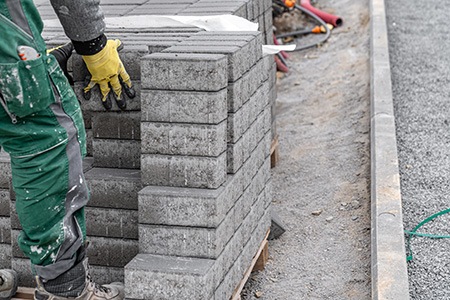
Take safety precautions when working with cinder blocks, including wearing gloves and proper eye protection. When transporting or lifting blocks, use a hand truck or dolly instead of carrying them by hand, especially if you’re dealing with larger units.
Safety Precautions With Cinder Blocks
If you want to work safely with cinder blocks, it is essential to take certain safety precautions. Always wear protective gear such as safety glasses, gloves, and a dust mask when handling cinder blocks to avoid particulate injury from debris or dust. You also don’t want to throw your back out lugging around heftier cinder blocks.
While cinder blocks are much lighter than concrete and are unlikely to result in injury, proper lifting techniques are crucial when moving heavier cinder blocks to prevent strain. Avoid twisting your body while carrying them, and use both hands for support.
Remember to stack cinder blocks securely using proper adhesive or mortar when using them in construction projects.
Additionally, check building codes and regulations in your area before starting any construction project involving cement-based materials like cinder blocks. Different regions have specific requirements related to masonry work for the safe installation of these types of structures.
Cinder Block Transporting & Lifting Tips
Transporting and lifting cinder blocks can be a challenging task, but with the right techniques and equipment, it can be done safely and efficiently. It's crucial to use proper lifting techniques.
This includes: using your legs instead of your back, keeping your feet shoulder-width apart for balance, and avoiding twisting while holding the block. Additionally, using a dolly or straps can help distribute weight evenly and take a lot of pressure off your body.
For larger projects, a forklift can also be used to transport multiple blocks at once. How much do cinder blocks weigh? Who cares if you have a machine doing the heavy lifting.
It's important to check the weight capacity of any equipment used to lift or move cinder blocks, as exceeding its limit could easily lead to accidents or property damage.
So How Much Does a Cinder Block Weigh?
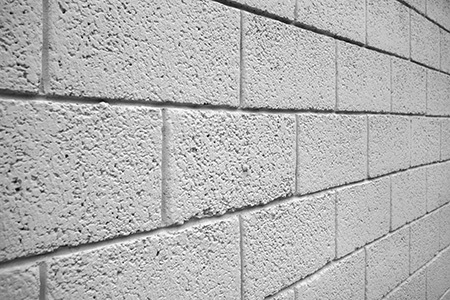
How heavy is a cinder block? Understanding the weight and composition of cinder blocks is essential if you're interested in using them for construction, gardening, and other DIY projects.
Cinder blocks are versatile materials that have a long history of use in landscaping and gardening projects. They are perfect for creating garden beds, retaining walls, and edging because they provide a stable base to build upon.
Cinder blocks are not regularly produced or available for purchase anymore, but you might be interested in using them for smaller, DIY backyard projects. They are more affordable than concrete blocks and offer reinforcement, despite not being as durable as concrete blocks.
Factors such as moisture content, the age of the block, the type of aggregate used, and the presence of hollow cores can also affect weight. While concrete blocks are a stronger building material than cinder blocks, they are also heavier and more expensive.
How much does a cinder block weigh? The standard weight of a cinder block can range from 15-72 pounds, depending on size and density.



